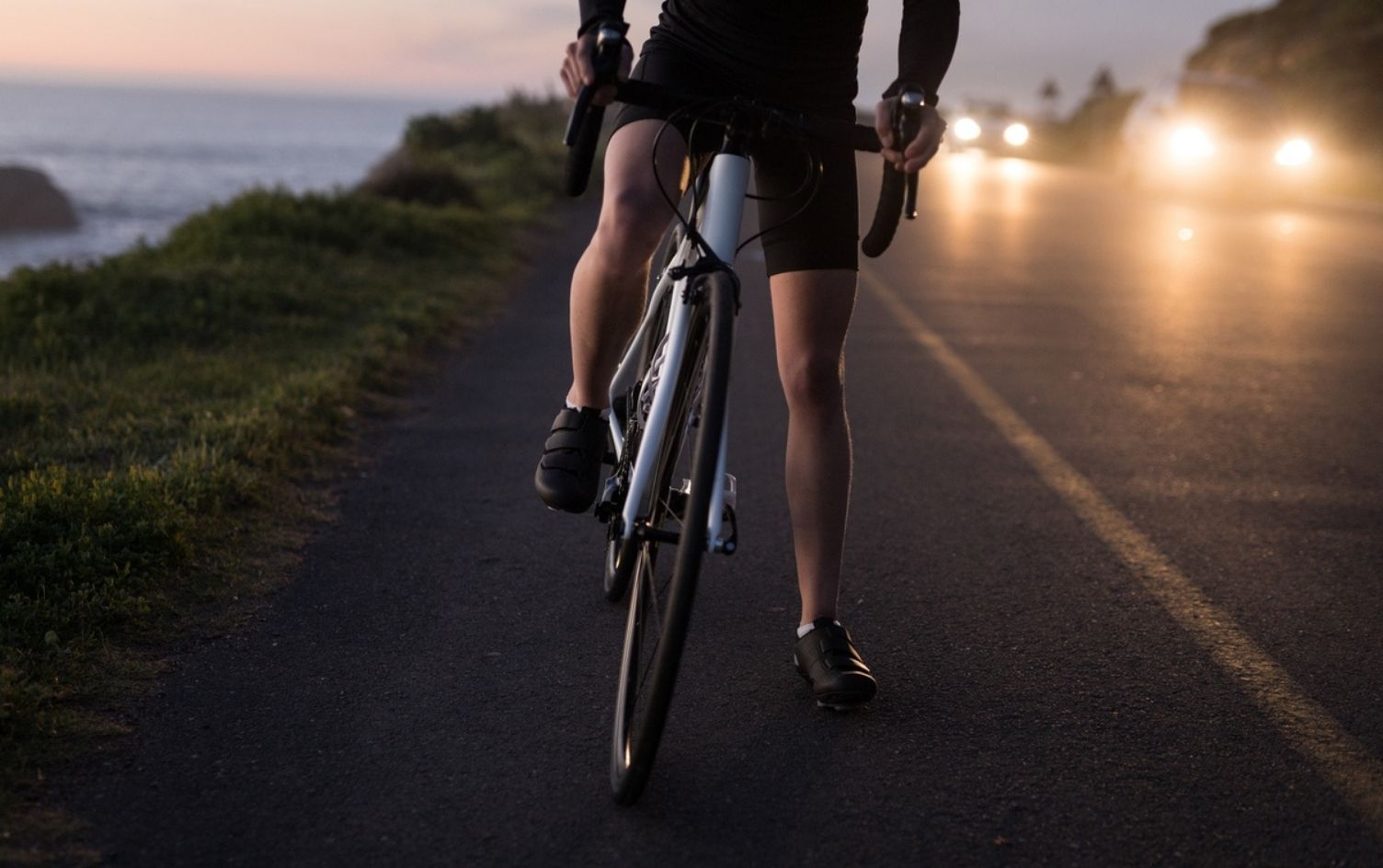As the daylight hours dwindle this time of year, we’re stuck doing our workouts or bike commutes at dawn, dusk or even straight up in the dark. It can be tempting to hang up your bike and start the countdown until spring is here again, but riding in the dark doesn’t have to be scary or unsafe … It just requires a bit more planning. Read on for easy ways to make your night (or early morning bike ride) safer and more fun!
ADD REFLECTIVE GEAR
ADD REFLECTIVE GEAR
The simplest way to add more visibility for those who are riding in low-light conditions is by adding reflective accents to your bike, bag and clothing. While most cycling-specific clothing claims to have reflective accents, unless the entire jacket or jersey is meant to illuminate in the dark, you may want to add extra strips of reflective tape. Fortunately, this is a cheap fix. You can buy fabric and plastic reflective tape online and add stripes to the back of your jacket, backpack, saddle bag or even along the frame of your bike. While this won’t illuminate the road for you, it will make you more visible to traffic.
ADD BIKE LIGHTS
ADD BIKE LIGHTS
If you are riding for longer periods after the sun has set (or before it’s up), you’ll want front and rear bike lights. A rear light should be red, and have a simple way to snap onto the rear triangle of your bike frame or your seatpost, or clip onto a saddlebag, backpack or pocket. Look for a rechargeable option: While you can get a light for less than $10 that requires batteries, you’ll save money in the long run by spending a bit more for something that’s USB-rechargeable.
Many lights come as kits with a white front light, which you’ll also need. Look for a front bike light with around 1,000 lumens and the ability to recharge via USB. One thousand lumens is plenty to light the road ahead without wasting battery power or blasting more light than you actually need, but much less than that may impact the quality of your ride.
BRAKE AND ACCELERATE GRADUALLY
BRAKE AND ACCELERATE GRADUALLY
Remember drivers don’t expect to see bikes on the road at night, so be more cautious with your accelerations and your slow-downs, especially if you’re riding in more urban areas. Try to avoid making any sudden moves, like a turn you didn’t signal. Ideally, you’ll have some reflective tape on your gloves or sleeves, so if you put a hand to the side to indicate you’re turning, you’ll be easily spotted by the driver behind you.
SKIP HEADPHONES
SKIP HEADPHONES
While wearing headphones during a ride is never really advisable, wearing them at night is a definite no. You want to stay as aware of your surroundings as possible when riding in the dark, since traffic is less predictable and you’re less obvious to drivers. Beyond that, there are plenty of pedestrians who don’t wear reflective gear and can step out in front of you abruptly, not to mention pets and wildlife that can dart across the road. Your true crime podcast can wait: Employ all of your senses to stay alert.
CLICK TO TWEET THIS ARTICLE > Don’t let fewer daylight hours keep you from your trusty two-wheeled transport. via @myfitnesspal #cycling
LOOK FOR LOWER TRAFFIC ROADS AND PROTECTED BIKE LANES
LOOK FOR LOWER TRAFFIC ROADS AND PROTECTED BIKE LANES
As we mentioned, unfortunately, drivers tend to be less aware of cyclists when it’s dark out, because they don’t expect to be sharing the road with anyone. While lights and reflective gear can help, the best option is to find routes that avoid major roadways. Look for roads that have wide, fully protected bike lanes and paths that feel safe to use after dark. If your area doesn’t have many ideal options, try to find the roads with the least amount of traffic and the most streetlights for your ride home.
LET SOMEONE KNOW YOUR PLAN
LET SOMEONE KNOW YOUR PLAN
On the note of route-planning, share your trajectory with someone. This is a good idea regardless of the time of day, but at night it becomes even more important. Text a friend, parent or spouse with a rough idea of where you’re going and when you expect to be back, or at least leave a note that’s easy to find. This may sound dramatic, but if you end up with a bike breakdown or a crash in an area with spotty cell service, having someone who knows where you are and will come looking for you can be a lifesaver. And of course, while we said not to use headphones, bringing your phone on dark rides is important.
RIDE TOGETHER
RIDE TOGETHER
There’s certainly more safety in numbers, so when possible, enlist a friend for your night rides. Maybe you can do part of your commute home from work together before going your separate ways, or meet up for your morning ride rather than each doing your own thing. Bonus: Knowing your friend is meeting you for your 6 a.m. ride makes you much more likely to get out the door and start pedaling!
Ready to take the next step? Unlock MyFitnessPal Premium to access custom goal settings, quick-log recipes, and guided plans from a registered dietitian. Premium users are 65% more likely to reach their weight loss goals!




